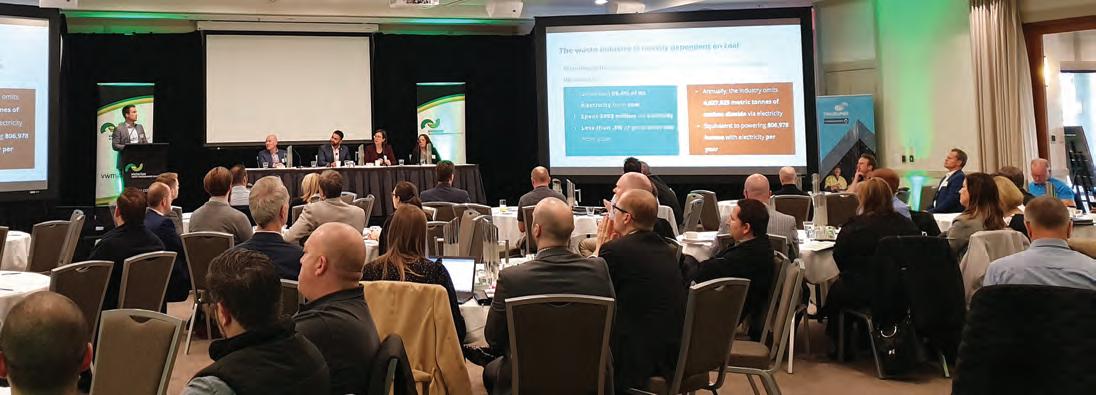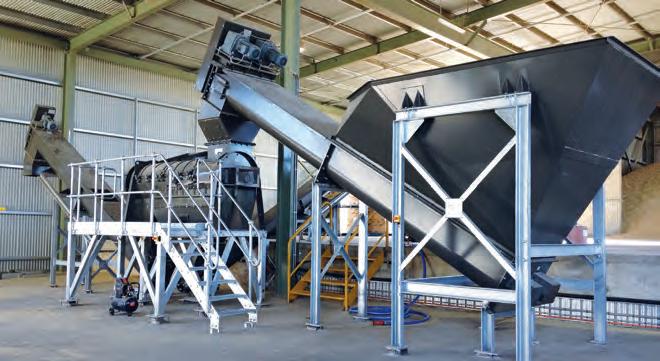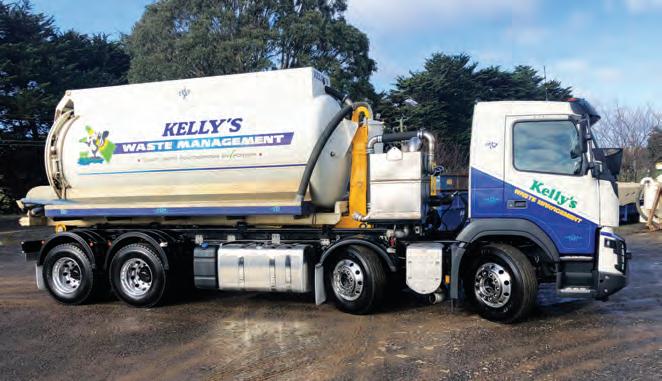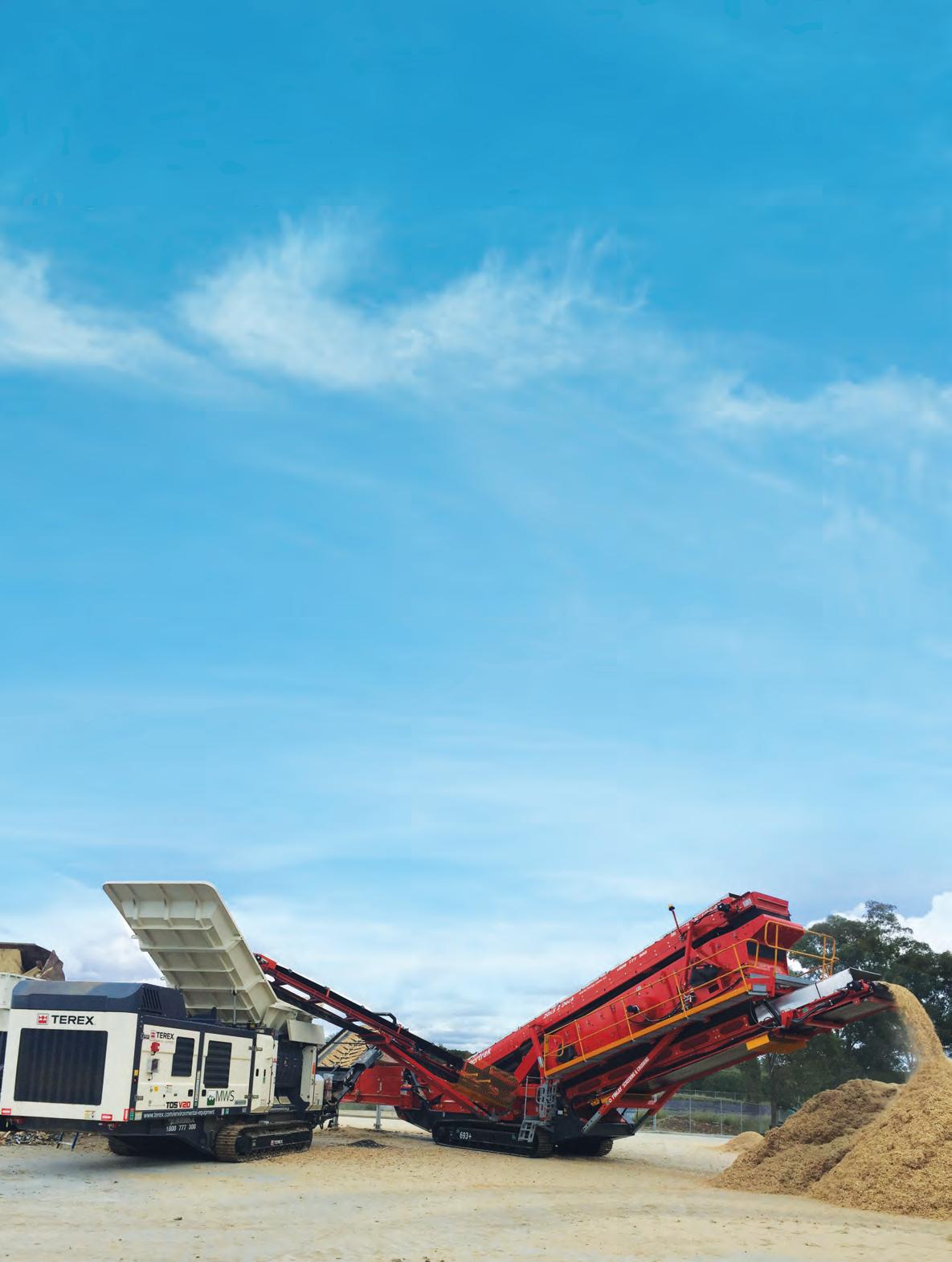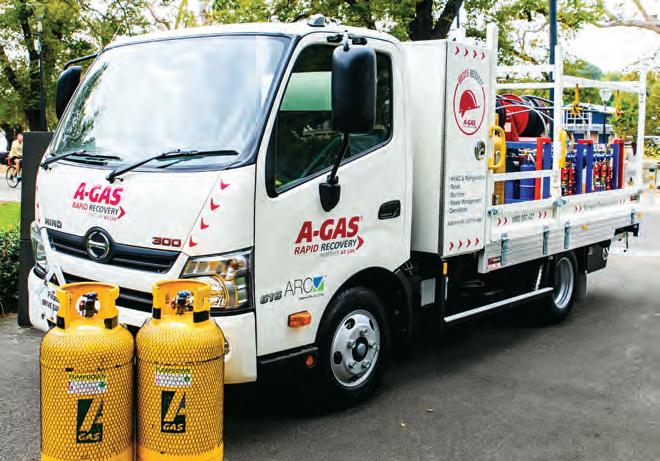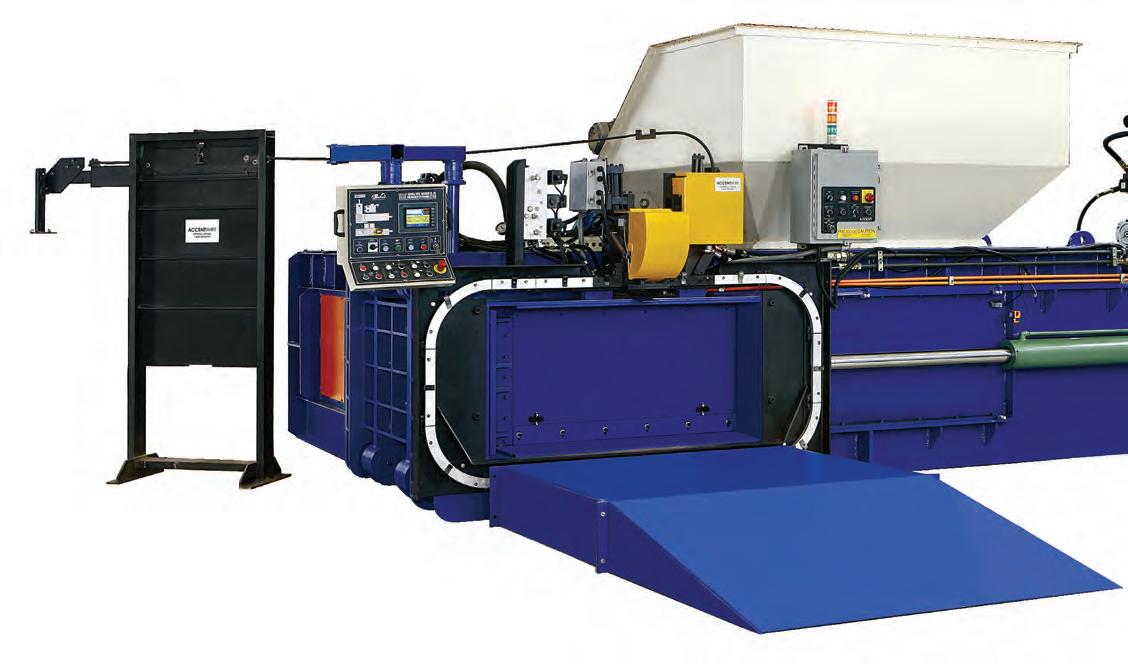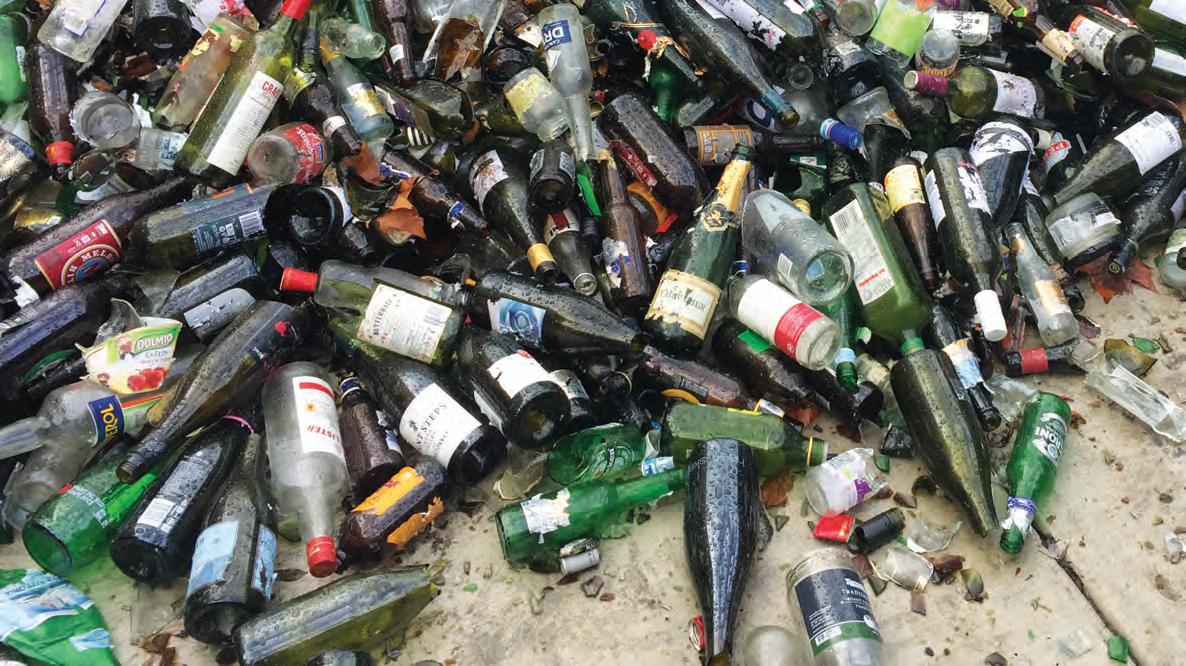
14 minute read
EXTINGUISHING RISK
WASTE MANAGEMENT REVIEW EXPLORES THE VICTORIAN EPA’S AMENDED POLICY FOR COMBUSTIBLE RECYCLABLE AND WASTE MATERIALS AND A TRAINING PARTNERSHIP TO SUPPORT IT.
Arecent spate of waste fires has highlighted the questionable storage and management practices of some Victorian resource recovery facilities.
While the issue spurred proactive responses from government and the private sector, significant media attention has resulted in public scrutiny.
Figures from Department of Environment, Land, Water and Planning reveal more than 100 recycling facility fires occurred in Victoria over the last 10 years, with the largest costing the Victorian Government over $110 million.
In 2017, a Coolaroo facility fire burned for 20 days before it was extinguished, causing significant human health and environmental problems. This resulted in community evacuations, with facility staff and the public also requiring medical treatment.
Following the fire, the Victorian Government established a Resource Recovery Facilities Audit Taskforce. The group was tasked with inspecting resource recovery facilities across the state to tackle stockpiles that might pose a fire risk. Since July 2017, the taskforce has conducted 628 inspections at 169 sites, issuing 186 notices and 35 sanctions.
The extremity of the Coolaroo fire reaffirmed the importance of proper material storage and prompted the Victorian Government to revise its Waste Management Policy for Combustible Recyclable and Waste Materials in 2018.
Organisations such as SKM Services have been issued with notices in line with the policy in mid-2019 to stop accepting combustible waste until compliance was achieved.
Danny Childs, EPA Resource Recovery Audit Taskforce Manager, says the waste and recycling industry is going through a period of momentous change.
“EPA’s message is clear: community and environment first. Compliance and enforcement efforts against waste crime and illegal industrial and chemical waste stockpiling will continue to be a major priority,” Danny says.
“In parallel, EPA has ramped up its work with industry to increase compliance understanding and risks that must be managed.”
Waste Management Review explores the amended Waste Management Policy and a training partnership with the Victorian Waste Management Association (VWMA).
At the VWMA 2019 State Conference, Miranda Tolmer, EPA Victoria Industry Guidance Unit Manager, discussed the combustible waste policy, its supplementary guideline report and steps towards compliance.
The EPA Waste Management Policy for Combustible Recyclable and Waste Materials was designed to enforce stringent safety standards in an attempt to address the rogue operators adversely affecting the sector’s reputation. Additionally, as with all EPA policies, it is based on the authority’s broader duty to protect human health and the environment.
Noncompliance can result in sanctions under the Environment Protection Act 1970.
Following the policy amendment, the EPA released a complementary set of compliance guidelines in October 2018.
Mirand a said the guidelines, developed in consultation with the Country Fire Authority and Metropolitan Fire Brigade, aim to support compliance and educate operators on their legal responsibilities.
The guidelines stress the significance of understanding fire hazards associated with waste storage and management activities, while also outlining steps to reduce risk.
During her presentation, Miranda named five key risk assessment concepts including previous occurrence, frequency, changes in operational conditions, changes in environmental conditions and behaviour.
Accompanying each concept are guiding questions operators can ask themselves in order to assess their facilities risk potential.
Besides previous occurrence for example, the guideline report asks – has a fire occurred in your industry, and if so, what were the consequences?
“Assessing incidents or near misses provides an understanding of the context in which the incident occurs,”
the report reads.
According to the guideline report, assessing this question provides a good indication of how to prevent the issue in the future.
“It is also important to not just consider your site, but think about all occurrences across industry,” the report reads.
The guideline lists a number of operator responsibilities to achieve compliance including ensuring new buildings and refurbishments meets requirements of local planning and starts on nearby bushland and travels to a facility for example, operators are still liable for managing resulting harm potential.
EPA guidelines suggest operators develop a risk register, where they can document a hazard and potential causes, before examining the likelihood and consequences for the business itself and wider community.
“Identifying hazards and assessing risk is an ongoing exercise. Risk assessment involves developing an appreciation of the scale of potential consequences,
EPA Victoria discussed its combustible waste policy at the VWMA State Conference.
building authorities, signing off on essential safety measures and actively involving employees in site safety.
Site managers must also respond to all fire prevention notices and comply with relevant Victorian occupational health and safety legislation. The policy applies to all waste and resource recovery facilities regardless of size, with only licensed waste tyre storage premises and licensed landfills excluded.
Additionally, the policy states that operators are responsible for minimising harm caused by fires irrespective of how they start. If a fire and the relative likelihood of those consequences should an event occur,” the report reads.
“Understanding the consequence and likelihood of a hazard can support and inform the selection, development and application of controls.”
Miranda highlighted the hierarchy of controls as a useful prioritisation framework for the identification and selection of control measures.
The hierarchy prioritises eliminating the hazard, followed by substituting the hazard and engineering controls. If those mechanisms aren’t effective, the hierarchy outlines administering controls through training and protective equipment.
Miranda said risk analysis must also be accompanied by an assessment of the practicality and feasibility of each control option. She added that the primary consideration for applying controls should always be the practicality of implementation.
“Risk controls should be adopted in line with a cautious approach that considers the site’s capacity, inventory, location and proximity to sensitive land uses,” Miranda said.
Specific risk prevention measures include activity separation, such as separating drop off, processing and storage areas to prevent contamination and hot loads entering combustible spaces.
Furthermore, early detection devices such as thermal probes to monitor storage temperature, video smoke detection and flame detection, regular inspections, routine equipment servicing and adequate waste supply are encouraged.
“Whether additional actions are required depends on existing fire risk management at each site, but could include improved work procedures, maintenance and training to minimise ignition, changing the volumes and way waste material is stored and improving firefighting capabilities,” Miranda said.
WORKSHOPPING THE ISSUE To educate industry on the amended policy, the EPA held five Combustible Recyclable and Waste Materials Guideline implementation workshops in the first half of 2019. The workshops involved discussions with recycling and landfill operators on steps to take to reduce the risk of fire.
Sessions took participants through a virtual facility tour, identifying various risks and controls that needed to be identified, and remedial actions
operators could take.
Members of the Country Fire Authority also provided advice on fire management and emergency preparedness.
Matt Peake, EPA Executive Officer Resource Recovery Gippsland, says the Gippsland workshop was a great opportunity for the growing region. Gippsland’s population is projected to increase by 25 per cent by 2030, bringing higher levels of waste generation with it.
“Our [Waste and Resource Recovery] implementation plan has identified that to meet the needs of our community, we need to assist industry and local government to continuously improve the performance of waste and resource recovery infrastructure and services in the region,” Matt says.
“Understanding how to comply with new regulation is critical in ensuring community expectations are being meet, and that these essential services are reliable.”
During her conference presentation, Miranda said the amended waste policy is less prescriptive than the original.
She added that the new policy has a greater focus on working with industry to provide flexible options and individualised solutions.
That said, VWMA Executive Officer Mark Smith says the guidelines are somewhat ambiguous, with differing expectations and interpretations resulting in non-compliance. He adds that operators are often unaware of their level of compliance.
Mark says this uncertainty can lead to situations where well-intentioned operators are punished, when the focus should be on those operators that intentionally circumnavigate the system.
Since then, the EPA has partnered with VWMA to develop a training program to assist guideline implementation and alleviate industry confusion.
Mark says the program is modelled off the guidelines, with a focus on tangible action rather than broad concepts.
“VWMA wants to ensure industry understands the guidelines so we can all work together to mitigate fire risk,” Mark says.
“It’s all about transferring awareness into action to support a thriving industry sector.”
Mark says the program is designed to support policy compliance, while also holding organisations like the EPA to account in the delivery of prescribed outcomes.
“We need the policy to work with and around industry so we can achieve the best environmental outcomes without compromising individual business needs,” Mark says.
The risk-based training program will help participants identify, quantity and develop plans and processes to manage risk.
Mark says to achieve this, operators must both understand inherent risks and document them.
“The whole process needs to be transparent and open, government and the private sector must come together to address this problem,” Mark says.
“VWMA and the EPA recognise the need to promote better practice through a shared commitment to drive industry leadership in the preventative management of combustible recyclable and waste material.”
Mark says participating in the training program will demonstrate a waste and resource recovery operator’s willingness and commitment to identify and manage risk.
“We aim to support members and the waste and resource recovery sector to reduce the frequency, scale and severity of fires at waste and resource recovery facilities,” he says.
Mark says the program is being developed through stakeholder consultation and is expected to commence in September.
Looking forward, Danny says the EPA’s regulatory powers will be strengthened from 1 July 2020, following implementation of the new Environment Protection Act.
The reform represents the most significant change to Victoria’s environmental regulatory regime since the introduction of the Environment Protection Act 1970.
The new legislation is focused on preventing risks, rather than managing harm after it has occurred, and is modelled on occupational health and safety legislation.
Danny says the changes will modernise the EPA’s inspection and inquiry powers and introduce strong regulatory duties across the whole waste supply chain, from generators and transporters to receivers of waste.
Changes include significant increases in maximum fines and penalties, such as potenti al jail time for repeat illegal dumping offences and stronger fit and proper person requirements.
Danny says strengthened proper person requirements mean undesirable operators can be prevented from holding a permission and/or be excluded from undertaking specified activities.
“Preventing environmental harm is at the core of this act and in an Australian first, the act will introduce a general preventative environmental duty that is criminally enforceable,” Danny says.
One of the most significant changes to the act is the general environmental duty.
“The general duty will require people conducti ng activities that pose risks to human health and the environment to fully understand risks and take reasonable steps to eliminate or minimise them,” Danny says.
THE REFRIGERATION RECOVERY SOLUTION TO YOUR

NEXT SCRAP OR DEMOLITION PROJECT!
Photo courtesy DTE Demolition
A-Gas Rapid Recovery provides high speed refrigerant recovery services to a wide range of industries.
All refrigerant recovered is documented in accordance with Arctick Regulations. Don’t risk the liability of having improper documentation.
When A-Gas Rapid Recovery performs your job site recovery, we stand between you and Arctick and assume the responsibility and liability.
Save Time and Money
Recover Upto x10 Faster Cylinders supplied
Access and power not an issue Email us: info@agasrapidrecovery.com.au Visit us: agasrapidrecovery.com.au
The state of waste
THIS YEAR’S VICTORIAN WASTE MANAGEMENT ASSOCIATION STATE CONFERENCE ADDRESSED THE KEY ISSUES OF A SECTOR IN FLUX.
In the lead up to their 2019 state conference, the Victorian Waste
Management Association (VWMA) was urging Victorians to continue recycling, despite temporary interruptions to the state’s waste and resource recovery network.
Following the closure of a major Victorian recycler in July, over 30 local councils were forced to send their recyclables to landfill. The closure prompted significant media attention and renewed discussions of the ‘waste crisis’.
Public interest in the waste industry was so high in the lead up to VWMA’s event that Channel 9 sent a camera crew. Stephen Kerr, Public Relations Exchange CEO, remarked they were probably looking to capture some controversy. If so, the crew was likely disappointed, with the Yarra Valley Lodge full of positive and proactive people, ready to tackle the challenges as a collective.
Mark Smith, VWMA Executive Officer, says despite recent challenges, the sector jointly delivers an efficient waste collection service to all Victorians.
“The private sector supports 23,000 Victorian jobs and invests over $800 million into waste and recycling services and infrastructure annually,” Mark says.
“We have the potential to create sustainable solutions out of this current crisis. I hope we capitalise on it.”
The VWMA State Conference returned to Melbourne’s Yarra Valley 30-31 July, with a range of presentations from across local government, state government and the private sector.
The two-day event addressed key challenges for the waste industry including EPA updates, legal insights into regulatory changes, labour laws and overseas workers, procurement and landfill discussions and technology updates.
The conference also featured an assessment of Victoria’s future waste infrastructure needs and one-month check ins on the state’s transition to compulsory electronic prescribed industrial waste transport certificates and the e-waste ban.
Lily D’Ambrosio, Victorian Minister for Energy, Environment and Climate Change, opened the event, following a welcome by Peter Anderson, Victorian Transport Association CEO.
Ms D’Ambrosio told attendees they could expect support and action from government.
Ms D’Ambrosio said concentration in the resource recovery market had caused problems for the industry. She added that government was working hard to find new homes for Victoria’s recyclable waste. The silver lining, she said, would be expanded opportunity for existing responsible operators.
The environment minister also outlined the state government’s plans for the upcoming Circular Economy Policy, before launching into a Q&A.
The first question came from National Waste and Recycling Industry Council (NWRIC) CEO Rose Read, who asked Ms D’Ambrosio about government’s lack of action on a container deposit scheme (CDS). Ms D’Ambrosio said the state had no current plans to develop a CDS however welcomed industry consultation.
The next session of the day was an e-waste check in with Ms Read and Libby Chaplin, Battery Stewardship Council CEO. Ms Read took attendees thr ough e-waste policy and compliance, before examining what was working with the ban and what wasn’t. Ms Chaplin then detailed the Battery Stewardship Council’s recent scheme accreditation proposal.
Following the presentations, audience members were asked to make note of
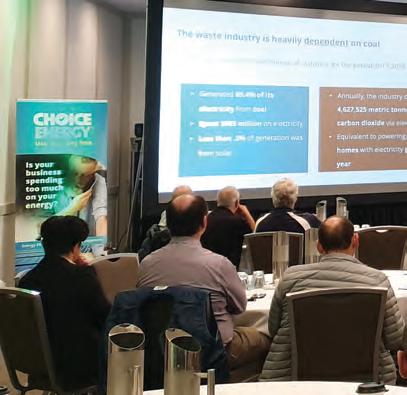
issues they were having with the ban, which VWMA will compile and address at a meeting with government ministers later in the year.
Next up, the conference heard from Andrea Walton, CSIRO Research Scientist, and Kellie Watson, Sustainability Victoria Campaign Manager.
Ms Walton and Ms Watson discussed separate research into community attitudes and perceptions of the waste and recycling industry. Ms Walton joked that the two research projects had come to similar conclusions, namely that despite sensationalist media attention, public trust in the industry had not changed between 2018 and 2019.
After an information-packed day, attendees were treated to networking drinks and a three-course meal.
On day two, Elissa McNamara, Infrastructure Victoria Resource Recovery and Recycling Advice Project Director, took attendees through the organisation’s upcoming report on future waste infrastructure needs.
She said the Victorian Government was specifically seeking advice on how to develop re-processing markets, particularly for materials that rely heavily on overseas markets such as plastic. Additionally, government has asked for guidance on enabling the use of products containing recycled materials, growing waste-to-energy investment and supporting a higher level of reuse for organics.
“As set out in the terms of reference, Infrastructure Victoria has undertaken comprehensive engagement with industry, the community, local government and other relevant stakeholders,” Ms McNamara explained.
She said the research team were building on previous material flow analysis and order of magnitude estimates, in addition to conducting new investigations. Ms McNamara said the research would be used to discern what specific infrastructure and material streams need support.
When asked by an audience member whether Infrastructure Victoria was looking into hazardous waste, Ms McNamara said it was outside the scope of the report.
“We are focusing on bigger volume, higher return materials such as plastic, glass and organics,” she said.
Just before lunch, attendees heard from Gina Capasso, KHQ Lawyers Principal Solicitor, Alex Petrakos, Peak Migration Director and Founder and Brianna Cattanach, P2 Group Workplace Training Manager. Together, the presenters discussed pressing issues for the workforce such as drug and alcohol policies, overseas worker visas and mental health.
The presentations garnered significant attention from attendees, with many asking questions about their responsibilities as owners and operators, and how to best improve workplace morale and safety.
Alex Serpo, NWRIC Secretary, discussed the council’s latest research on landfill levies across all states. Mr Serpo explained existing levy rates and approaches before examining how levies are invested. He said the NWRIC is currently discussing initiatives to ensure levies are structured in a manner that best incentivises higher recycling and reduced pollution.
“For example, levy portability, where the levy liability is based on where the waste is generated and not disposed of, even if transported across levy regions or state and territory borders,” Mr Serpo said.
Mr Smith said the event was a success and covered everything from industry branding to government policy.
“I’ve been to a lot of conferences over the years and none come close to delivering the tangible benefits ours do to our members and attendees. A huge thank you to our partners for this event,” Mr Smith said.
